If you click on a link and make a purchase we may receive a small commission. Read our editorial policy.
A team-up of godly proportions: How Revenge of the Gods brought Wonder Woman and Shazam together
Though Lazarus Planet may have ended in February, its larger impact is felt in the miniseries Revenge of the Gods
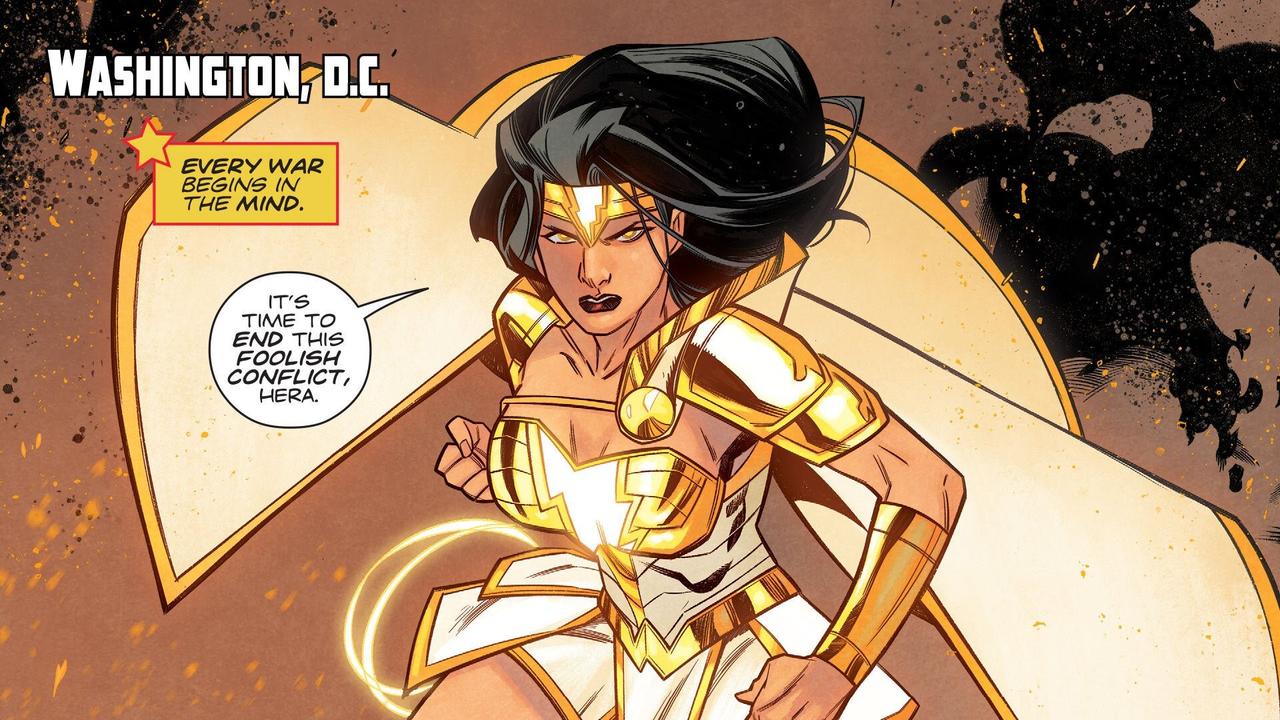
While Lazarus Planet, DC’s first crossover event of 2023, ended this past February, the immediate aftermath of the event is felt in the subsequent miniseries Lazarus Planet: Revenge of the Gods. The four-issue title is written by G. Willow Wilson, penciled by Cian Tormey and Emanuela Lupacchino, with inkers Raul Fernandez and Wade Von Grawbadger, placing Wonder Woman and her extensive supporting cast with the Shazam family. The Lazarus Planet epilogue has divine consequences for both Wonder Woman and Shazam, especially in a back-up story in the miniseries’ final issue by Josie Campbell and Caitlin Yarsky focused on Shazam and Mary Marvel.
More than just bringing two iconic DC superhero properties together, coinciding with a similar cinematic team-up in Shazam!: Fury of the Gods, Revenge of the Gods serves as a setup for bigger things to come across the DC Universe. Campbell and Yarsky’s back-up story not only serves as a denouement for Campbell and Evan “Doc” Shaner’s 2022 Mary Marvel miniseries but also lays the groundwork for Mark Waid and Dan Mora’s upcoming Shazam relaunch. Meanwhile, a back-up feature written by Becky Cloonan and Michael W. Conrad, penciled by Alitha Martinez, and inked by Mark Morales and John Livesay sets the stage for the conclusion of Cloonan and Conrad’s own Wonder Woman run.
Here’s how Revenge of the Gods brought together Wonder Woman and Shazam, leaving both heroes changed and facing an uncertain future.
A complicated turn of events for the Shazam family

The Shazam family came into Lazarus Planet after a particularly tumultuous time in their history, especially for Billy Batson and his sister Mary Bromfield. Picking up from the 2021 comic book series Teen Titans Academy and the Shazam miniseries by Tim Sheridan and Clayton Henry, Billy is trapped in Hell and chained to the Rock of Eternity, leaving Mary as the DCU’s primary champion of Shazam for a time. Billy is eventually rescued and reunited with the rest of his family but the situation at home only gets more complicated from there.
In Revenge of the Gods, Billy falls out of favor with the ancient wizard Shazam, who gave him and his family their magical powers in the first place, after barring him from the Rock of Eternity during Lazarus Planet. In retaliation, the wizard curses his power source, so whenever Billy attempts to tap into his super-powered alter ego, he appears severely weakened in his adult form. With the situation growing increasingly dire, the Shazam family decides to bestow its powers to Wonder Woman to empower her and turn the tide of battle against the villainous pantheon looking to subjugate the world.
The wider impact of Lazarus Planet
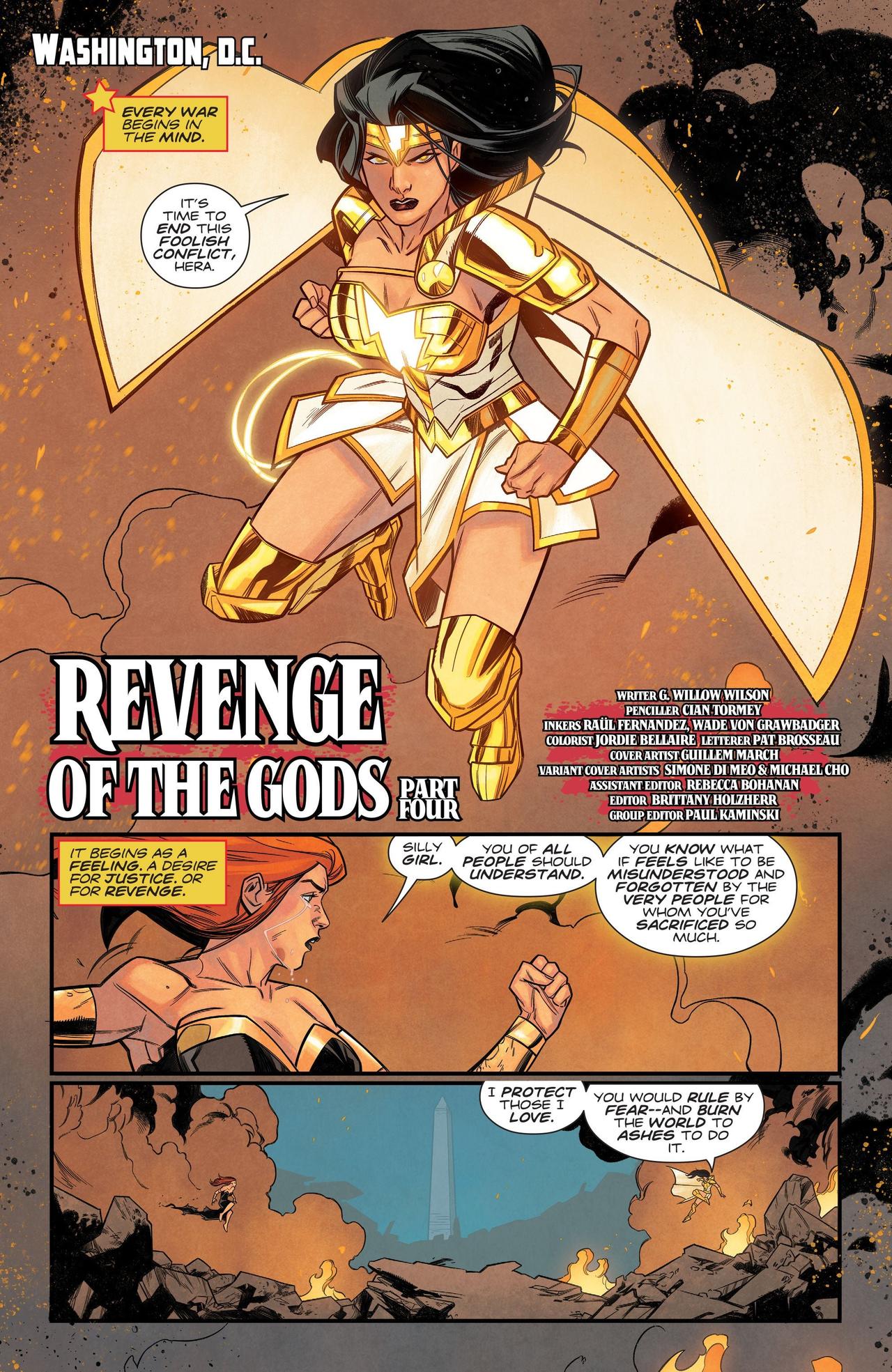
Spinning out of the 2022 miniseries Batman vs. Robin by Mark Waid and Mahmud Asrar, Lazarus Planet plunged the DCU into chaos when Lazarus Island, the originator of the life-giving Lazarus resin, exploded in a massive volcanic blast. The eruption caused a resin-tinged acid rain to sweep across the globe, tampering with heroes and villains’ powers and leading to some surprise resurrections amidst the calamity. The Olympian goddess Hera took advantage of the confusion, slaying her husband Zeus and seizing control of Olympus.
Hera allied herself with the wizard to attack the DCU and attempted to tap into the wizard’s powers for herself. With Wonder Woman’s longtime frenemies Cheetah and Ares joining in to stop Hera, Hera was ultimately deemed unworthy of the wizard’s power and defeated, exiled from Mount Olympus by her kin as the Amazons set out to rebuild from the devastation Hera unleashed during her time commanding the gods.
Mary Marvel’s divine gift

Over the course of Revenge of the Gods, Billy proves himself worthy of wielding the power of Shazam once again, eventually overcoming the wizard’s curse to regain full control of his abilities when transformed. For Mary, the situation becomes a bit more complex as the source of her own powers take on a drastic change to reflect a different pantheon behind it – the Amazons’ patron goddesses. With the blessing of Queen Hippolyta, Mary receives the agility of Selene, the strength of Hippolyta, the invulnerability of Aurora, the flight of Zephyrus, the stamina of Artemis, and the wisdom of Minerva.
Mary still nominally looks the same transformed as she had when she received her powers from the wizard, but she no longer splits the power with her brother. Just as Black Adam draws his powers from the Ancient Egyptian pantheon, Mary has her own distinctly different divine backing-- and one that ties her much closer to the Wonder Woman mythos. These patron goddesses’ influence on the Amazons was recently explored in the DC Black Label miniseries Wonder Woman Historia: The Amazons by Kelly Sue DeConnick, Phil Jimenez, Gene Ha, and Nicola Scott, and it’s good to see elements of that story somewhat canonized here.
The godly reset for Wonder Woman
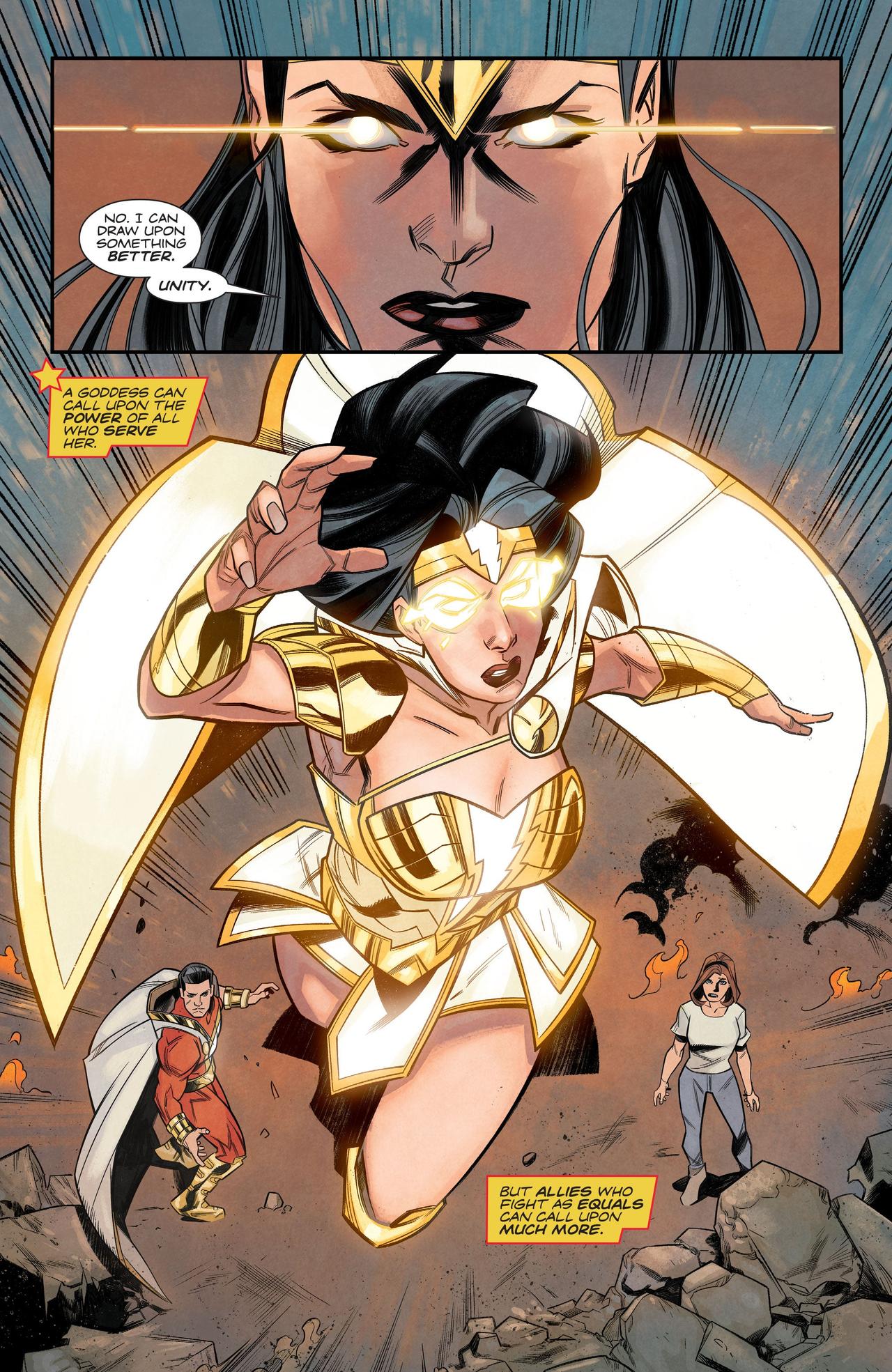
Revenge of the Gods affords the Amazons their own changes in the wake of going to war with Hera and her godly allies over the fate of the DCU. The conflict brings the three Amazon tribes closer together, particularly the factions led by Queens Hippolyta and Nubia, with the two vowing to unify further in the name of greater cooperation and sisterhood. In defeating the last of Hera’s allies and sending Hades back down to the underworld, the Amazons come to an agreement that while they are grateful to goddesses like Athena and Artemis for helping them establish their civilization, they are no longer indebted to them and aim to find their own continuing strength from within.
Specifically to Wonder Woman, Revenge of the Gods not only gives her a temporary magical boost from Shazam’s powers to ultimately save the day, mirroring a similar upgrade in Dark Crisis on Infinite Earths by Joshua Williamson and Daniel Sampere, but also sees her reconcile with her own godly roots. This is not Diana Prince’s first brush with divinity, however. After her death in the 1995 crossover event Underworld Unleashed by Mark Waid and Howard Porter, Diana was resurrected as the Olympian Goddess of Truth before being made mortal once again for aiding those living on Earth. Diana would similarly gain the title of God of War after killing Ares during Brian Azzarello and Cliff Chiang’s run on Wonder Woman, though this ascension was later discarded after the restoration of the DCU’s classic continuity with 2016’s DC Rebirth initiative.
Revenge of the Gods has Diana embrace her godhood in her final showdown with Hera, in a moment that feels full circle to the start of Cloonan and Conrad’s run in 2021. In that run, Cloonan and Conrad explored the immediate aftermath of the 2020 crossover event Dark Nights: Death Metal by Scott Snyder and Greg Capullo, with Wonder Woman saving the universe by ascending to cosmic godhood and defeating the Batman Who Laughs. As the multiverse was reborn, Diana fell between worlds before being trapped among the Norse pantheon in a pocket universe for a time before returning to the DCU. Having come to a greater peace with herself, Diana is still very much a superhero, but also now deals with the cosmic much more.
Tying together the Wonder Woman and Shazam mythos, Lazarus Planet: Revenge of the Gods sorts out the complicated power imbalance between Billy Batson and Mary Bromfield while clearing the table for Wonder Woman’s own next step. With Hera rising as a larger DCU antagonist, the two most divinely oriented heroes step up and work together to save the world from holy subjugation. The most visible consequence of Lazarus Planet beyond its February finale so far, Revenge of the Gods is both an ending and sets the stage for new beginnings that readers will see very soon as the future of the DCU continues.
All four issues of Lazarus Planet: Revenge of the Gods are on sale now, with the series written by G. Willow Wilson, penciled by Cian Tormey and Emanuela Lupacchino, inked by Tormey, Lupacchino, Raul Fernandez, and Wade Von Grawbadger, colored by Jordie Bellaire, and lettered by Pat Brosseau and back-up stories by fan-favorite creative teams.
Green Arrow: How DC's emerald archer lost his title for four years but is about to find his way back
Follow Popverse for upcoming event coverage and news
Find out how we conduct our review by reading our review policy
Let Popverse be your tour guide through the wilderness of pop culture
Sign in and let us help you find your new favorite thing.


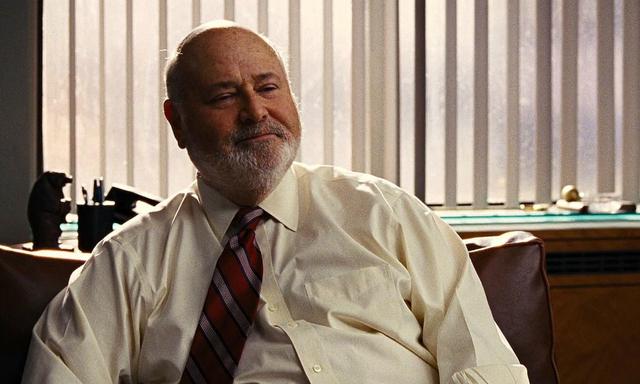




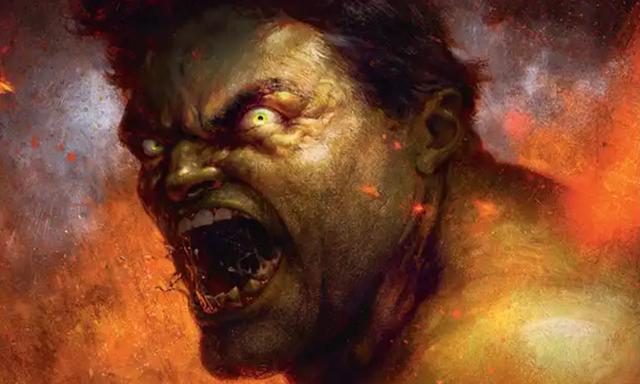
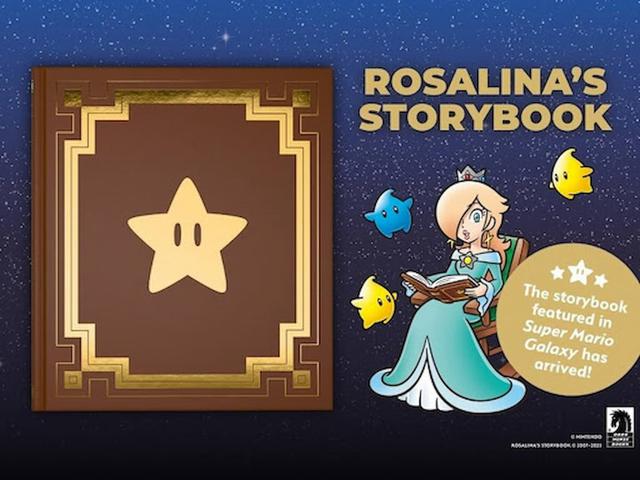







Comments
Want to join the discussion? Please activate your account first.
Visit Reedpop ID if you need to resend the confirmation email.